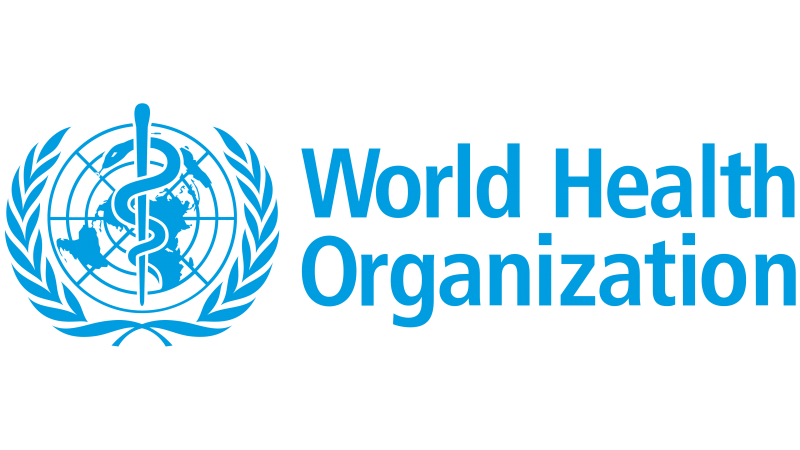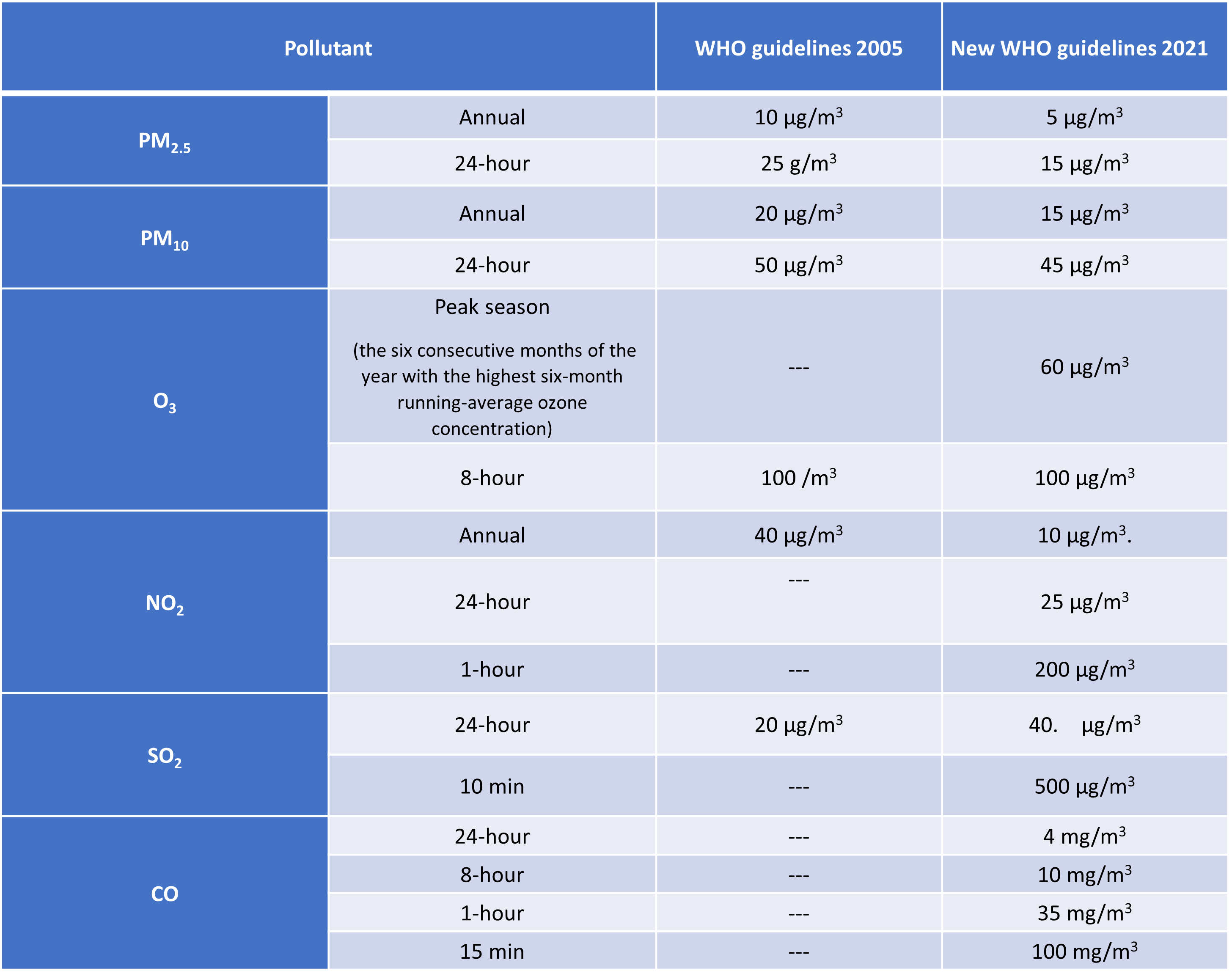NEW WHO AIR QUALITY GUIDELINES 2021 / 07 10 2021

The World Health Organisation (WHO) introduced new Global Air Quality Guidelines (AQGs) on September 22, 2021. The new version of AQGs was developed on the already available threshold limits that were in place since 2005. Both the threshold values from 2005 and the limits that were recently announced are given in table 1. The updated values provide clear evidence that poor air quality damages human health at even lower concentrations than were assumed previously.

Tabel 1. WHO Gloval Air Quality Guidelines
In 2018 WHO reported that air pollution results in more than 7 million premature deaths annually. That makes air pollution one of the biggest problems in worldwide health and safety management. Both short term and long term exposure to air pollution result in negative health impacts. For instance, reduced lung capacity and function, respiratory infections, aggravated asthma, ischaemic heart disease and stroke are the most well-known impacts of poor air quality. Moreover, every year more evidence shows that air pollution affects human health even at low levels.
Therefore, this year on September 22 the World Health Organisation (WHO) introduced new Global Air Quality Guidelines (AQGs). The new version of AQGs was developed on the already available threshold limits that were in place since 2005. Both the threshold values from 2005 and the limits that were recently announced are given in table 1. The updated values provide clear evidence that poor air quality damages human health at even lower concentrations than were assumed previously.
The new guidelines recommend threshold levels for 6 so-called common air pollutants – particulate matter (PM), ozone (O₃), nitrogen dioxide (NO₂) sulfur dioxide (SO₂) and carbon monoxide (CO). Moreover, the guidelines also highlight the importance of different particulate matter types (for example, black carbon/elemental carbon, ultrafine particles, particles originating from sand and dust storms). However, there are no clear facts that can be used to set AQGs for these specific particles.
The new particulate matter (PM2.5 and PM10) limits were significantly reduced. For instance, the annual PM2.5 concentration limit was tightened by 100 % (10 ug/m3 in 2005 and only 5 ug/m3 in 2021). At the same time, the 24-hours average PM2.5 threshold value was also decreased from 25 ug/m3 in 2005 to 15 ug/m3 in 2021. Moreover, the WHO highlighted the importance of nitrogen dioxide pollution. In this case, the annual threshold limit was cut from 40 ug/m3 to 10 ug/m3.
In conclusion, Airscan believes that the new guidelines will be warmly welcomed by governmental agencies and NGOs. Only collective actions can make the air clean around the world. Finally, an extension of the air quality monitoring network in all countries and regions is the first step to be taken by governments in this important topic.